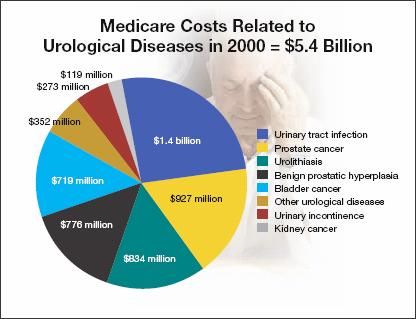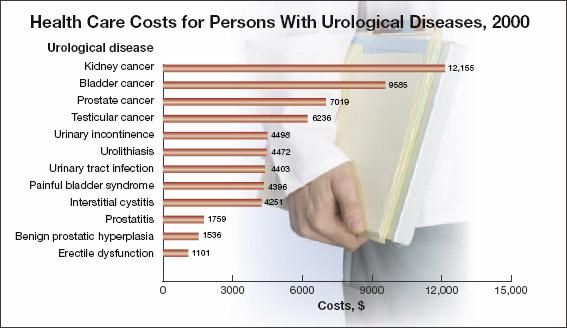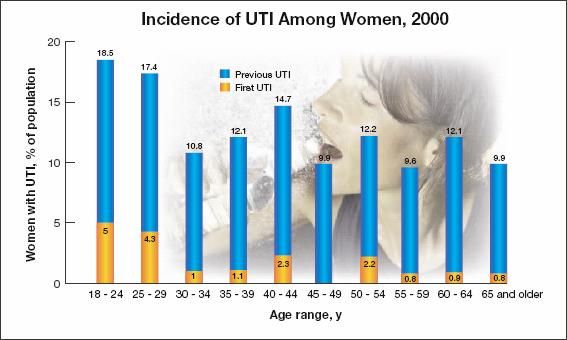- Clinical Technology
- Adult Immunization
- Hepatology
- Pediatric Immunization
- Screening
- Psychiatry
- Allergy
- Women's Health
- Cardiology
- Pediatrics
- Dermatology
- Endocrinology
- Pain Management
- Gastroenterology
- Infectious Disease
- Obesity Medicine
- Rheumatology
- Nephrology
- Neurology
- Pulmonology
Half of Cost Burden of Urological Diseases Borne by Medicare
Currently, an estimated 26 million persons in the United States have a urological disorder, according to a newly released government-funded report. Bladder, prostate, and other urinary tract diseases in US adults cost almost $11 billion annually (2000 data), with Medicare's share exceeding $5.4 billion, according to the study by Litwin and colleagues funded by the NIH.
Currently, an estimated 26 million persons in the United States have a urological disorder, according to a newly released government-funded report. Bladder, prostate, and other urinary tract diseases in US adults cost almost $11 billion annually (2000 data), with Medicare's share exceeding $5.4 billion, according to the study by Litwin and colleagues funded by the NIH.
The 5 most costly urological diseases, which account for $9.1 billion, were urinary tract infection (UTI) ($3.5 billion), urolithiasis (kidney stones) ($2 billion), prostate cancer ($1.3 billion), bladder cancer ($1.2 billion), and benign prostatic hyperplasia (BPH) ($1.1 billion). Medicare's share of the expenditures associated with these diseases was $1.4 billion for UTI, $834 million for urolithiasis, $927 million for prostate cancer, $719 million for bladder cancer, and $776 million for BPH (Figure 1). The estimated annual costs for privately insured persons for these 5 urological diseases were $4403, $4472, $7019, $9585, and $1536, respectively (Figure 2).

Figure 1. The cost burden for Medicare of urological diseases was half of total medical expenditures in 2000. Source: Litwin MS et al.
Urologic Diseases in America.
Washington, DC: National Institute of Diabetes and Digestive and Kidney Diseases; 2007.

Figure 2. Estimated annual health care costs associated with urological cancers are significantly higher than those for more common urological diseases, such as urinary tract infections, among privately insured US persons aged 18 to 64 years. Source: Litwin MS et al. Urologic Diseases in America; 2007.
UTI is a common diagnosis among women, particularly those aged 18 to 29 years (Figure 3). Of the $3.5 billion in medical expenditures for UTI, $2.5 billion was spent on treating nearly 12.8 million UTIs in women; the remaining $1 billion was spent on treating approximately 2 million UTIs in men. Annual health care expenditures for men with a UTI were $5544 compared with $2715 for men without a UTI. The difference in costs was much smaller for women: $5407 for those with a UTI versus $3833 for those who did not have a UTI.

Figure 3. In 2000, 10.8% of US women aged 18 years and older self-reported at least 1 urinary
tract infection (UTI) in the preceding 12 months. Source: Litwin MS et al.
Urologic Diseases in
America;
2007.
